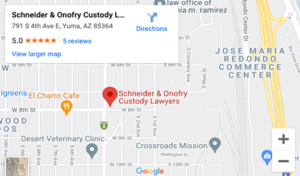New Subchapter V Law Provides More Streamlined Bankruptcy Relief for Small Businesses
The new law can provide an easier, less expensive, and quicker option for many small business debtors to confirm debt restructuring plans.
an individual owning 20% or more of it can each file as a small business debtor.
Under Subchapter V, only the debtor may file a restructuring plan, and that generally must be done within the first 90 days of the case. Unlike Chapter 11, a trustee will be appointed in every Subchapter V case to (i) help facilitate the development of a consensual restructuring plan and (ii) serve as a conduit through which creditor distributions are made.
Importantly, Subchapter V contains several new advantages. To highlight a few:
- The debtor no longer needs to prepare and obtain approval of a disclosure statement as a prerequisite for seeking approval of a restructuring plan.
- The rights of holder of claims secured by the debtor’s personal residence can be modified if the debt was used primarily in connection with the debtor’s business. That provides a small business debtor with greater flexibility to address SBA loan guarantees and other situations resulting from the pledge of a home as security for a business-related obligation.
- The “absolute priority rule,” which can give an objecting creditor near veto power over the restructuring plan, will not apply in Subchapter V cases. Not only does this improve the debtor’s bargaining position; it also enables small business owners to retain their equity interest in the business without being forced to pay creditors in full.
- A consenting impaired class of creditors is no longer needed for confirmation, provided the restructuring plan does not discriminate unfairly, is fair and equitable to each impaired non-consenting class, and meets the other confirmation requirements. To be considered fair and equitable to unsecured creditors, the plan must be funded with all of the debtor’s projected disposable income for three years (or up to five, if so ordered).
- As a general rule, no creditors committee will be formed.
- No quarterly UST fees are payable.
As with most law changes, questions remain. For example, to be eligible, must the small business debtor continue operating throughout the bankruptcy case? Or can Subchapter V be utilized to restructure debts even if the business ceases shortly after the bankruptcy filing?
Subchapter V is elective, and it remains critical to consult with an experienced bankruptcy professional about which bankruptcy chapter will best achieve the debtor’s goals and objectives. The bottom line, however, is that Subchapter V can provide an easier, less expensive, and quicker option for many small business debtors to confirm debt restructuring plans. That, in turn, also may provide them with greater negotiating power to reach “out-of-court” debt restructurings and thereby avoid bankruptcy altogether.


















